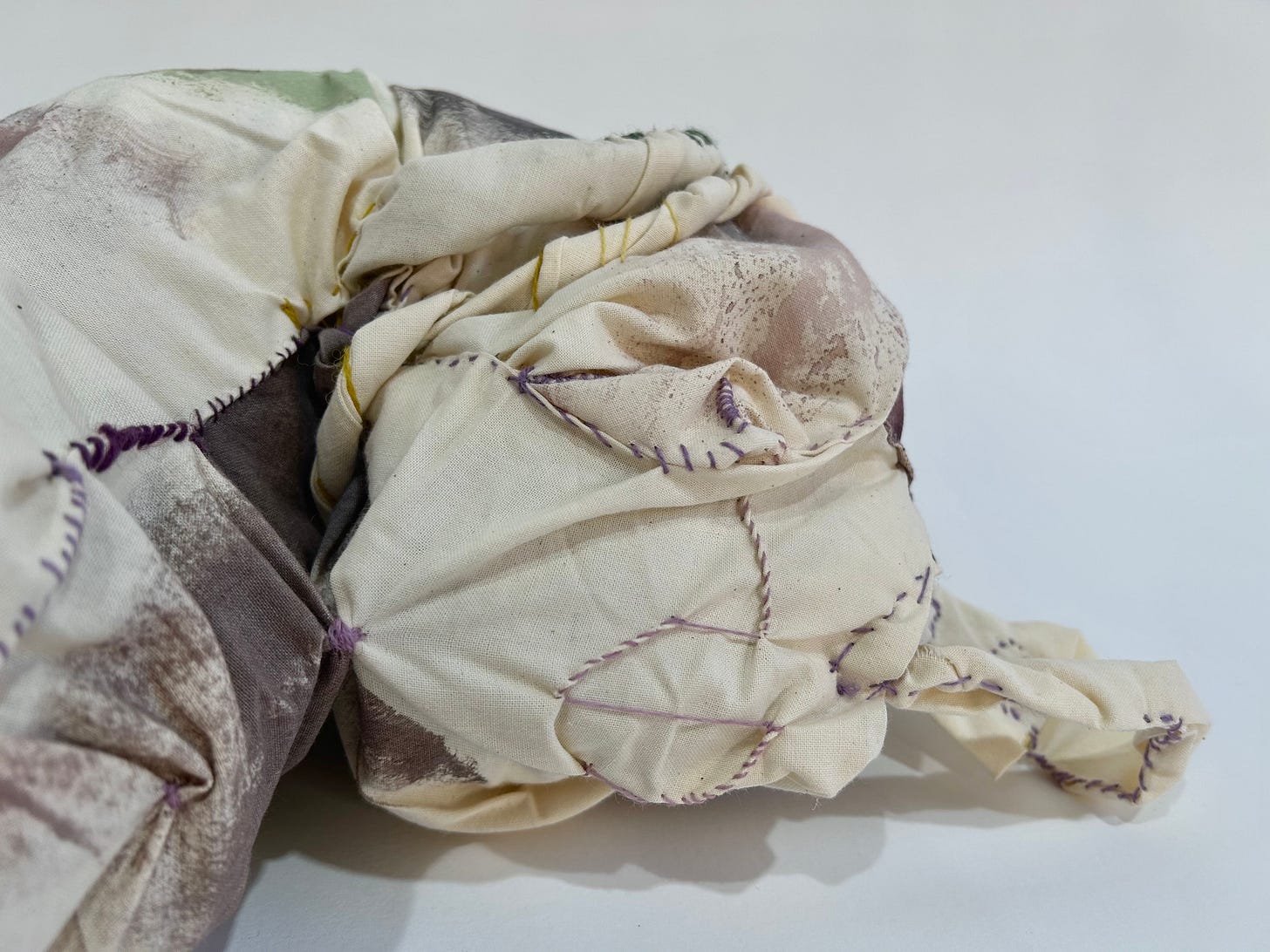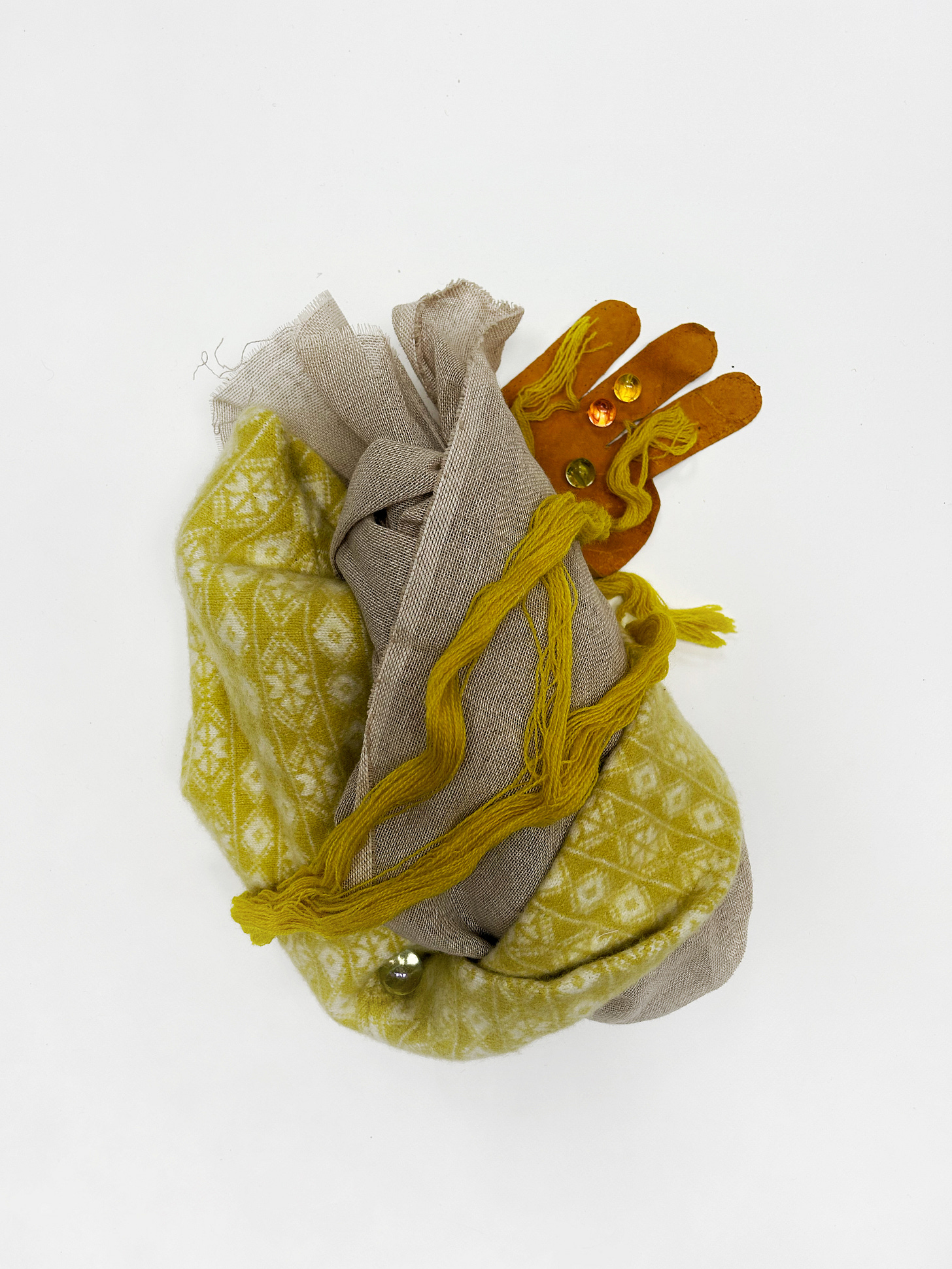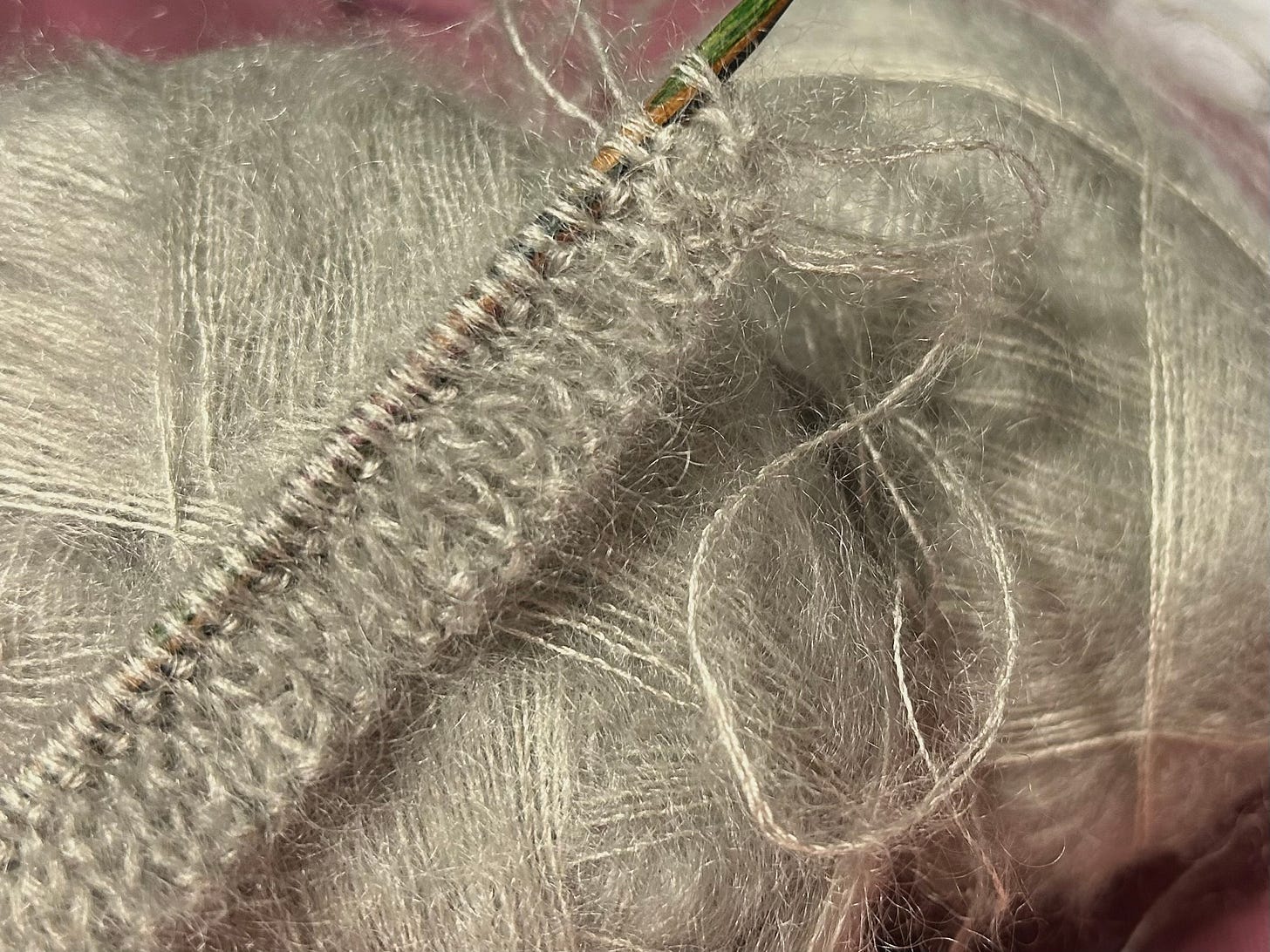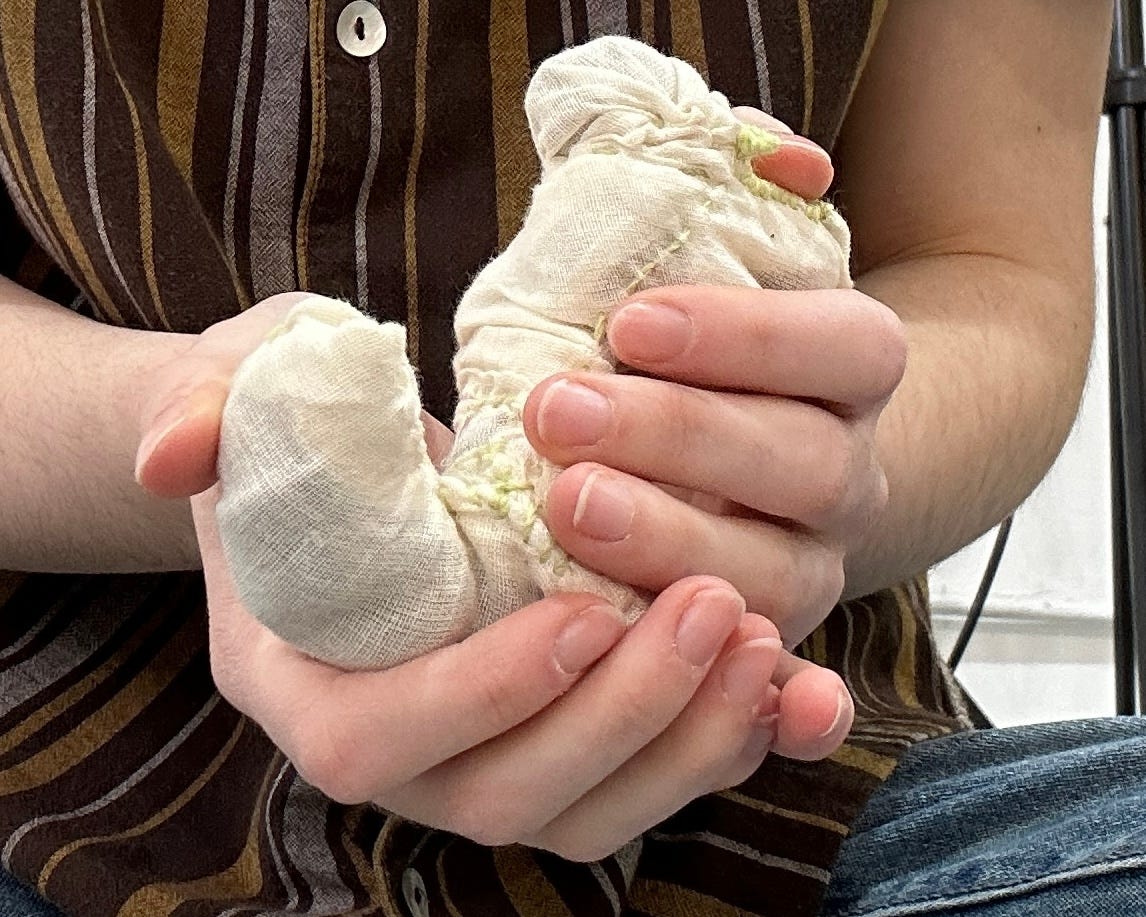Over and Over and Over
Tuning in to Textures and Processes
Recently, my practice has been shaped around an exploration of how I can invite the viewer into a space to engage directly with an artwork. I’ve been considering how our senses inform our experience of a moment, in particular, touch, and how I might use this to encourage the viewer to interact with my work.
From birth, we’ve used the sense of touch to discover, learn and understand our surroundings. If we’re not sure what something is made from, or we don’t yet understand it, we extend the hand to find out, or to confirm.What is it about an object that makes us want to touch it or hold it in the first place?
I’ve been thinking about the kind of objects that I would want to hold and have found myself leaning towards
textiles. I like fabric’s ability to either drape or fold to match the shape of its surroundings, or to hold its own structure and rigidity (in which case it exists in space more actively). I like the variation in surface texture that is available in textiles – how the combination of types of fibres can create a soft or rough feel, and how the arrangement further alters this. The weave of thread in a tea-towel, or the tight pile of string in a rug.
I think the key to my tactile enjoyment of textiles is that they feel approachable; a tea-towel or a rug are everyday domestic objects. We are used to their qualities, we aren’t afraid to pick them up, to fold them or to wash them. They’re not too fragile or precious, but they retain an aesthetic quality.
“The objects were a means of approach. She understood the child through the objects that belonged to the child’s world.”
“Anna wanted to live and did live close to the textiles, the minerals, the food, to the plants and the dust and the smells and to the elements and the small animals. And in Anna’s eyes, everything was knickknacks, everything was miniature, it all belonged to the world of objects and animals. The toys and the children’s clothes. The organs in their bodies. The child’s liver and heart.”
Olga Ravn, My Work
Aside from my studio explorations, I’ve recently started knitting a cardigan, and it has made me think about the similarities between our bodies and the processes of making textiles, which are often repetitive, following a predictable pattern. Everything feels like its part of a cycle – the movement of string and needles for a knit stitch, which then starts again. When you get to the end of a row, you start again. An embroidery needle moves through fabric, returns to the other side, and then starts again. I find myself in a meditative state whilst doing these actions, which are so dependable, and start to notice the cycle of my breathing. I like the idea that inside our bodies, thousands of little patterns of events are happening to carry out necessary functions, and find it grounding to slow down and concentrate on an external sequence to create something.
I like that lots of biological parts of us are made up of high dimensions that shrink – thousands of metres of blood vessels that loop and weave to fit inside our bodies. Hundreds of metres of alveoli (the air sacs where gas exchange takes place) knitted closely together in our lungs. In almost exactly the same way, a piece of cloth is made of hundreds of metres of thread woven together.
I’ve been playing with creating objects that remind me of organs, but that feel beautiful in a way that to some people, organs might not. Because of some of the similarities and associations I’ve mentioned, textiles have felt like the best place to start. I’ve also enjoyed matching the sizes of these ‘organs’ to the palm size, both because this feels like the size that the organ might actually be, and because I hope it provides an invitation to pick it up. An invitation to slow down and respond on an instinctive level to how the object feels to hold.
We Invite You…
Our lives are made up of tiny, incremental events. Are there clues in these tiny, incremental events which can inspire your work? Might you make a drawing consisting of 100 breaths? Or build a small sculpture consisting of layer upon layer of days?





